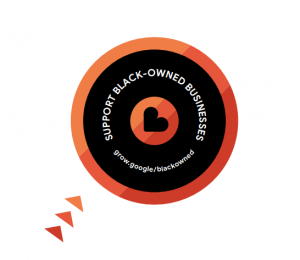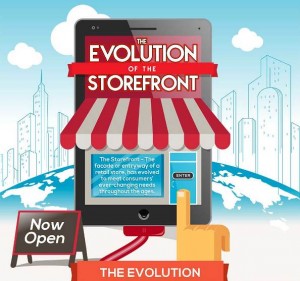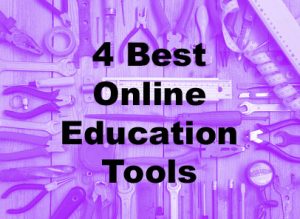In early spring, U.S. Major League Baseball teams convene for six weeks of spring training before the season officially opens in April. One common trait among all the teams is a focus on the basics. Even with the sophistication of training methods, modern equipment and the use of analytics, baseball players must be proficient at the basic fundamentals to succeed at their craft in the big leagues.

And, so it should be in the big league of professional sales. Even in the evolution of what has become known as social selling, the fundamentals are as important as ever.
Successful sales professionals are – and always have been – effective at building trust with their buyer and solving a buyer’s need.
Social Selling Tips from the Pros
I set out to gather insights from leading social selling practitioners. The following is as comprehensive a summary as I could deliver in less than 2000 words. I want to be on record that there are many other qualified people with social selling insights not included in this article. If you are one of them, I welcome your insights, comments, thoughts, ideas, etc.
Jill Konrath – Practice your profile.
In keeping with the baseball theme, practice is a key element. Every baseball player practices before a game. It’s true of all athletes in all sports. No athlete ever steps into a game situation without extensive practice of game day scenarios.
Jill Konrath points out the importance of practicing what you want to communicate in your LinkedIn profile before you publish it live. Considering that most buyers will eventually end up on your LinkedIn profile, it’s only logical that it’s ready for game time. Unfortunately, too many of us don’t update our LinkedIn profile often enough, don’t write it from the lens of our buyer and don’t rehearse it before we publish it live.
Jill Rowley – Build trust.
In an age where the buyer is in control, what the buyer needs most from a seller is reliable information that solves a need. Building trust is the equivalent of creating a magnet for buyers to seek you out because you are a trustworthy resource.
Jill Rowley points out that your actions in social media should enable your buyer to discover you as a trustworthy individual in order to be desirable to the buyer because you are a valid resource, or as Jill says “an information concierge.”
Jon Ferrara – Sales as a service.
Sales has always been a social activity. A sales professional with a service mindset is generally well received by her customers.
Jon Ferrara points out that social media brings us back to the “small town” feel of people interacting in life and business. Jon emphasizes the benefit of sales professionals allowing their network – which can include customers and prospective customers – insight into their personal lives. He points out how the lines between business and personal have become blurred through social media. And, he points out that the modern sales paradigm is a service model.
Jack Kosakowski: Make it about the buyer’s experience.
No one cares about the seller’s journey…It’s about the buyer’s journey. In a B2B scenario, a typical buyer goes through not less than six stages in their journey from start to transaction.
Jack Kosakowski points out how sales professionals should integrate social data, social engagement, the phone (yes, the phone) and in-person meetings, and integrate each element to make it a better experience for the buyer.
Peter Strid: Training and support are key.
Organizations have always invested in sales training. However, the most common form of sales training is focused on product training and sales process training.
Peter Strid points out that social selling should integrate into existing sales workflow so that it doesn’t complicate the current process. It should become a part of the sales process. Training and ongoing support are a necessity for the sales team. And, even as social selling becomes naturally integrated into the culture and process of the sales strategy, training and ongoing support are still needed to evolve best practices.
Koka Sexton: Don’t forget your customer.
We’ve long understood that creating more business from existing customer relationships is lower cost than acquiring a new customer. As if the economics isn’t enough to motivate your social selling efforts to remember your customer, the relationship value might be.
Koka Sexton points out that a social selling methodology is not only about finding new prospects and new business, it’s also about engaging and keeping your current customers.
Peter Caputa: Integrate social into prospecting.
All sales professionals prospect. While cold calling is generally considered ineffective, there are ways to get results from the phone.
Peter Caputa points out ways to integrate social into your prospecting. He offers tips on how to send emails, leave voice messages, and engage on LinkedIn, through an integrated approach.
David J.P. Fisher: Don’t look stupid on LinkedIn.
When LinkedIn opened up its publishing platform beyond its influencer program, anyone with a LinkedIn account became eligible to publish articles. The LinkedIn Publishing platform provides an opportunity for anyone to demonstrate your knowledge of industry trends.
David J.P. Fisher points out that some sales professional should avoid making fools of themselves if writing is not their strength. Since a key element of social selling is to build trust and authority, a poorly written article is not going to help you accomplish this.
Julio Viskovich: Beware of fakes on LinkedIn.
In many ways, social channels level the playing field. Anyone can have a digital presence, publish, curate and engage. Unfortunately, there are unscrupulous people who create fake accounts for the sole purpose of aggressive selling, which is NOT what social selling is about.
Julio Viskovich points out that the rise of fake LinkedIn profiles makes people more defensive and less likely to connect with people they don’t know. This reinforces the importance of earning trust in order to earn social connections.
Cheryl Burgess: Social leadership is key.
Social selling is a strategic decision. In many organizations, it requires a paradigm shift. It also requires an investment in resources that includes people, process and technology.
Cheryl Burgess points out that social leadership is crucial to an organization who embraces the social employee. The absence of social leadership risks slower adoption of best practices, due at least in part to insufficient investment in people, process and technology for a successful social employee strategy.
Bryan Kramer: Selling is “H-to-H.”
We tend to speak of sales industries as falling into two buckets – B2C and B2B. And, while there are distinct differences in strategy and tactics between the two, there is one thing we can all agree on in both. People buy from people they know, like and trust.
Bryan Kramer says that social selling should be called “social helping.” He points out that “It’s not B2C or B2B, it’s H-to-H.” He gained worldwide exposure when he first introduced his H-to-H concept in a TED talk. Social sellers who routinely help others build trust, build relationships and ultimately win more customers.
Amy Heiss: Social media is a tool like the telephone.
The sales profession has evolved. And, so has the communication tools available to sales professionals. Consider how the telephone and email were both once new communication tools. Likewise, social media is a communication tool that can be used to connect with customers and prospective customers.
Amy Heiss points out that social media is a tool that can be used to connect people in every part of the business, not only in sales. She emphasizes the importance of listening before jumping into a conversation on social.
Carlos Gil: Be social…
Your prospects spend time on social media either to unwind and enjoy non-work content, or to grow professionally through content, networking and providing their own thought leadership. They are not on social media waiting for your sales pitch.
Carlos Gil points out that the key to social selling is being social vs. simply being on social media.
Guillaume Decugis: Leverage content for lead generation
In the age where a B2B buyer is at least 60% of the way through the vendor selection process before ever speaking with a sales person, content is mission critical. Simply stated relevant content, addressing each stage of the buyer’s journey, should be fueling sales leads. Whether the marketing department supplies original content, or you curate relevant content, put it to work for you.
Guillaume Decugis points out that you need to think like a teacher and educate your buyers through relevant content.
Timothy Hughes: Social selling is change management
Let’s face it, some organizations still view social media as a waste of time in any business setting. It sounds hard to believe in 2016, but it’s true.
Tim Hughes points out that social selling is a change management program. It requires buy-in from key stakeholders. They need to understand why social can be integrated into sales processes, and how it’s done. Once stakeholders see results, the buy-in usually happens quickly.
David Graham: Provide people a reason to connect with you.
I get a lot of invitations to connect on LinkedIn. Many are from people I’ve never met. Unfortunately, the majority of them don’t personalize their invitation. In other words, they don’t give me a reason to connect.
David Graham suggests (and I agree) that you should never use the default invitation text provided by LinkedIn. Always provide a reason to connect. And, when they accept your invitation, thank them. Do NOT sell to them.
Sarah Goodall: Employee advocacy is way bigger than social selling.
Employee advocacy refers to a strategic initiative whereby employees in a business across different areas willingly engage online to “advocate” for the brand through authentic behavior.
Sarah Goodall points out that social selling is a form of employee advocacy because sales is just one of many functions within a business. Organizations who embrace employee advocacy are more likely to be successful in their social selling efforts.
The Social Business Practitioner
The 2011 Sales Benchmark Index (SBI) research findings reported that 57% of the buyer journey was completed before a salesperson was actively involved in the process. By 2015, this number had reached 69%. We can expect to see this number increase in the future.
Putting into practice the strategies, tactics and tips listed here won’t neceesarily make you a social selling pro. Nor do they fix all sales problems in a business…We do however suggest that embracing the modern culture and technology of social engagement can have a profound effect on revenue.
I’ll close by asking you to consider this paradigm not as social selling, but rather as being a social business practitioner. A social business practitioner is someone who uses social media strategically in combination with SMART goals to achieve sales results by engaging in digital channels to help, build trust and influence people so that prospective customers WANT to do business with you.
Digital & Social Articles on Business 2 Community(66)







